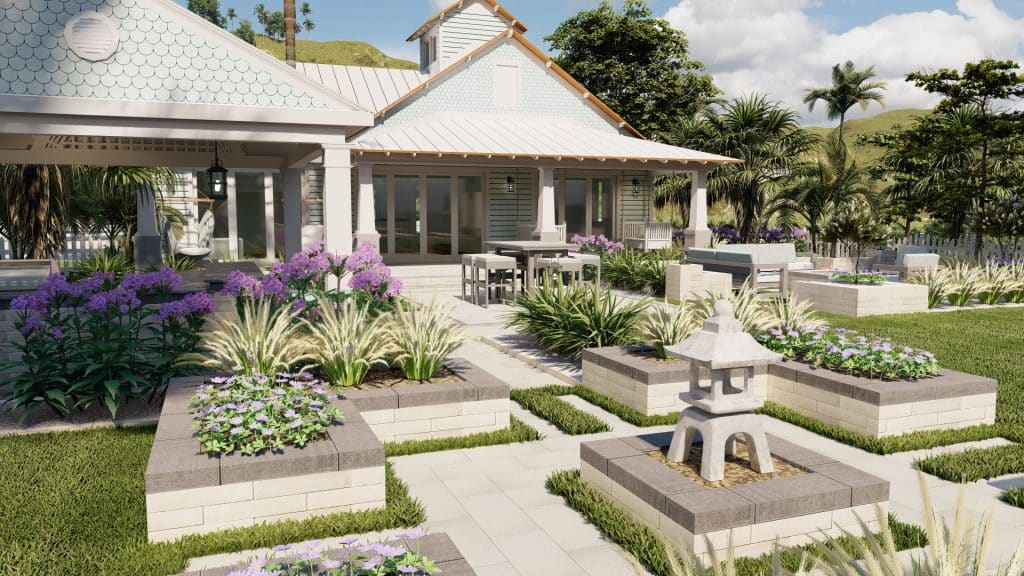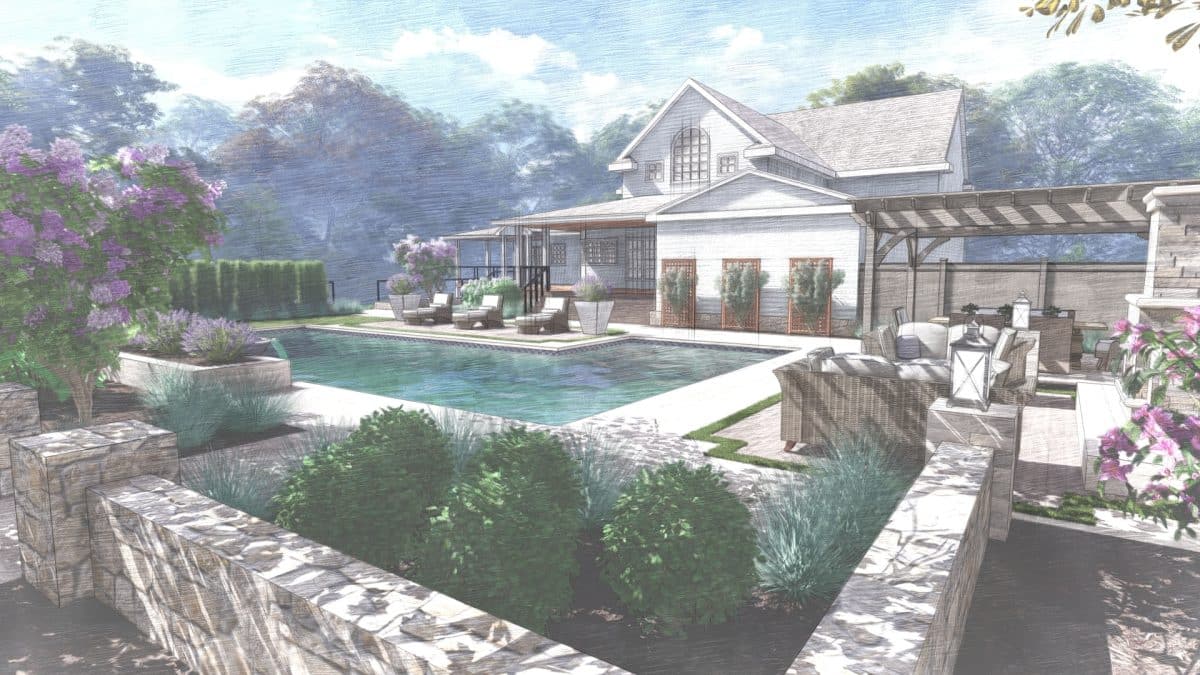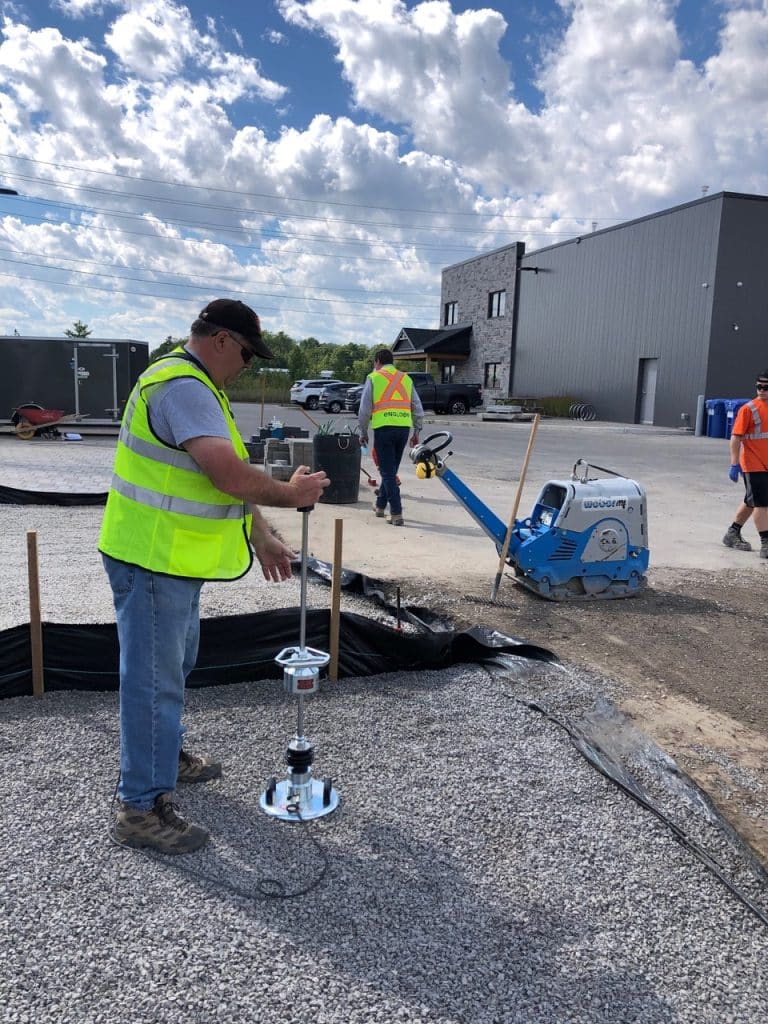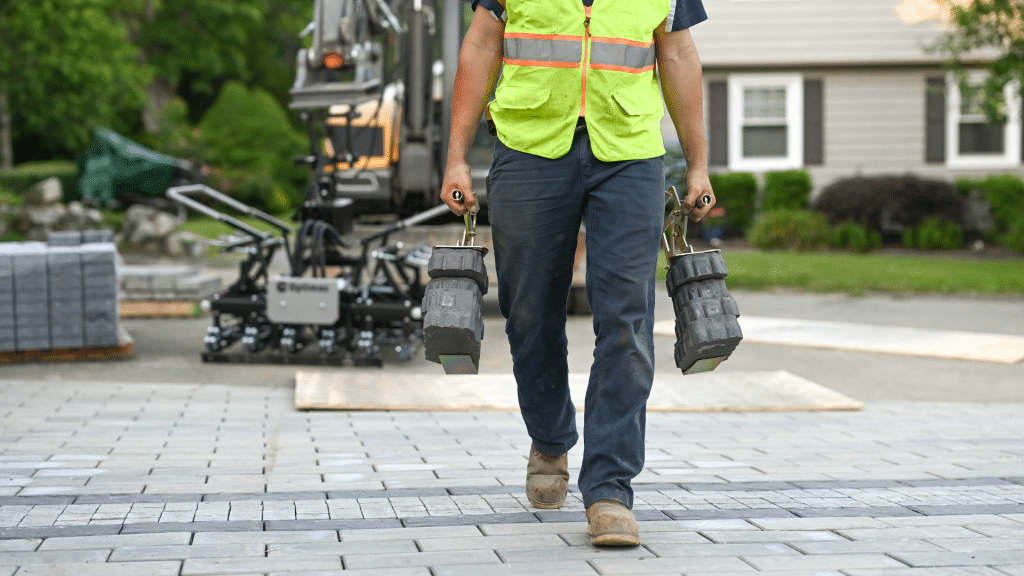This path involves creating detailed layouts and selecting materials to craft aesthetically pleasing and functional spaces, transforming client ideas into beautiful, tangible realities.

What Does a Designer Do?
Hardscaping designers are the creative visionaries who transform outdoor spaces into beautiful, functional environments. As a designer in the hardscaping industry, your responsibilities include:
- Concept Development: Creating initial design concepts based on client needs, site conditions, and aesthetic preferences.
- Detailed Planning: Developing detailed plans and drawings, specifying materials, colors, and textures to bring your vision to life.
- Client Collaboration: Working closely with clients to understand their desires and provide design solutions that exceed their expectations.
- Visualization: Using tools like 3D modeling and augmented reality to help clients visualize the final product before construction begins.
- Project Coordination: Collaborating with engineers, installers, and project managers to ensure the design is executed accurately and efficiently.
Career Path
A career in hardscaping design offers numerous opportunities for growth and specialization. Here’s a typical career path:
- Junior Designer: Start your career by assisting senior designers with drafting, modeling, and client presentations.
- Design Specialist: Focus on specific areas such as garden design, outdoor kitchens, or water features, developing expertise in those niches.
- Lead Designer: Take charge of entire projects, from initial concept through to final implementation, and mentor junior designers.
- Design Manager: Oversee a team of designers, manage multiple projects, and ensure design quality and consistency across all work.
- Creative Director: Shape the overall design direction of a company, focusing on innovation, brand identity, and client satisfaction.
Benefits of a Career in Design
Creative Freedom: Express your creativity and bring unique design visions to life.
Client Interaction: Build strong relationships with clients and see the direct impact of your work on their satisfaction.
Variety of Projects: Work on diverse projects, from intimate garden spaces to expansive commercial landscapes.
Cutting-Edge Tools: Utilize the latest design software and technology to enhance your creativity and efficiency.
Professional Growth: Continuously develop your skills and advance your career in a dynamic and evolving industry.
Ready to Get Started?
If you’re ready to embark on a career in hardscaping design, consider the following steps:
- Education: Obtain a degree in landscape architecture, graphic design, or a related field.
- Experience: Gain practical experience through internships, freelance projects, or entry-level positions in landscape design firms.
- Certifications: Pursue certifications from organizations like the American Society of Landscape Architects (ASLA) to boost your credentials.
- Portfolio Development: Build a strong portfolio showcasing your design projects, skills, and creativity.
- Networking: Connect with industry professionals, attend design workshops, and participate in industry events to stay updated on trends and opportunities.
Join the hardscaping industry as a designer and play a pivotal role in shaping stunning outdoor spaces. Explore the endless possibilities for creativity, client satisfaction, and professional growth in an inspiring career.

A DAY IN THE LIFE OF
Joe Raboine
Vice President of Design
“I spend a lot of time teaching contractors and designers how to build better outdoor living spaces.” – Joe Raboine, VP of Design at Oldcastle APG
Want to Hear More From Industry Pros?
Watch our video interviews from people pursuing careers in the industry.





